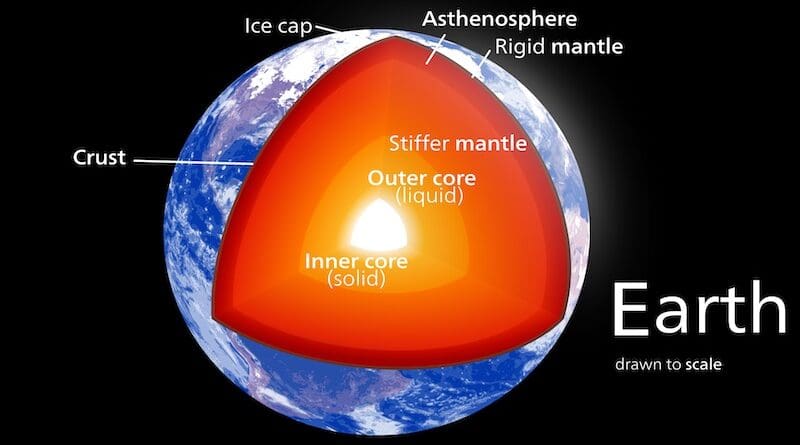Shifting Sands Of Time: Earth’s Inner Core Slowdown Alters Cadence Of Our Days – Analysis
Over ten years ago, the rotation of Earth’s inner core started to slow down. It caused slight changes in the length of our days by mere fractions of a second.
According to Space.com, researchers at the University of Southern California (USC) used seismic data from earthquakes and nuclear tests to create images showing the movement of Earth’s inner core. By examining how fast seismic waves travel and how they interact with Earth’s layers, scientists can figure out where the inner core is and how it moves.
The study reveals that, since roughly 2010, Earth’s inner core has been slowing down—or even reversing its direction—compared to its speed in earlier decades. A USC statement says this inner core is now rotating more slowly than Earth’s surface.
The inner core has slowed down for the first time in several decades, according to John Vidale, professor of Earth Sciences at USC and co-author of the study. While other scientists have proposed different explanations, Space.com’s latest study offers the most convincing evidence, it reports.
Inner Core: Size & Composition
Earth’s inner core is a solid, extremely hot and dense sphere primarily composed of iron and nickel, situated about 3,200 miles (5,150 kilometres) beneath the surface. With a radius of approximately 760 miles (1,220 kilometres), the inner core spans a diameter of about 1,520 miles (2,440 kilometres). These dimensions work out to roughly the size of planet Mars, or 75% the size of Earth’s moon. Despite the fact that it is relatively small in size, Earth’s inner core accounts for about 1% of the total volume of Earth.
Inner Core Slowdown Explained
Earth’s inner core is encased in a liquid-iron-and nickel layer, and is topped by a solid, rocky mantle. New research has found that that Earth’s inner core is slowing down primarily for two reasons:
- Currents created by liquid iron that keeps moving in Earth’s outer core, called ‘convection’, help keep in balance Earth’s magnetic field
- The mantle’s gravitational forces have an effect on the speed of the inner core, too. Both factors combined work to slow down the movement of the inner core
Details of the Liquid Layer Core
The liquid layer of iron and nickel around the inner core is about 1,400 miles (2,250 kilometres) thick, with temperatures soaring up to 9,000-11,000°Fahrenheit (5,000-6,000°Celsius). This liquid iron-nickel outer core has a diameter of roughly 4,300 miles (7,000 kilometres).
Mantle’s Structure, Composition
The solid rocky mantle is about 1,800 miles (2,900 kilometres) thick, with temperatures ranging from around 1,600°Fahrenheit (900°Celsius) near the top to about 4,000°Fahrenheit (2,200°Celsius) near the bottom. The mantle, primarily, comprises silicate minerals; these include pyroxenes, olivine and garnet. This mantle has a diameter of roughly 7,900 miles (12,700 kilometres).
Seismic Data Unveils Earth’s Core
Seismic data were recorded between 1991 and 2023 from 121 repeat earthquakes that occurred near the South Sandwich Islands, situated in the South Atlantic. They also used data from several nuclear tests worldwide to draw their conclusions.
Understanding Earth’s Inner Core
In theory, repeated earthquakes should create identical seismograms because they happen in the same place. This means that the pattern of seismic waves recorded from these earthquakes should be the same each time. That is why comparing seismic data from different times can show changes happening beneath Earth’s surface. If the seismograms are not identical, it suggests that something has changed inside Earth.
Small differences in the time it took for seismic waves to travel through Earth at various points of time in history have shown that the inner core is slowing down. By looking at how the travel times of these waves have altered, scientists can infer that the inner core’s rotation has changed. They said that, although this change might slightly alter the length of a day by fractions of a second, it will not be noticeable. In other words, while the inner core’s slowdown is significant for understanding Earth’s interior, it will not affect our daily lives in any significant manner.

